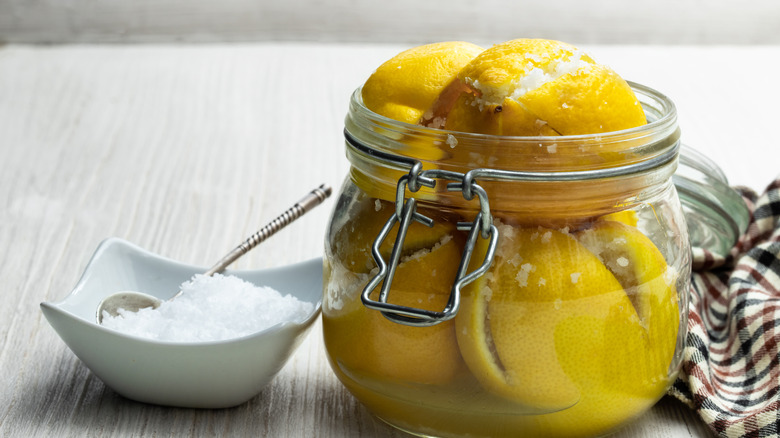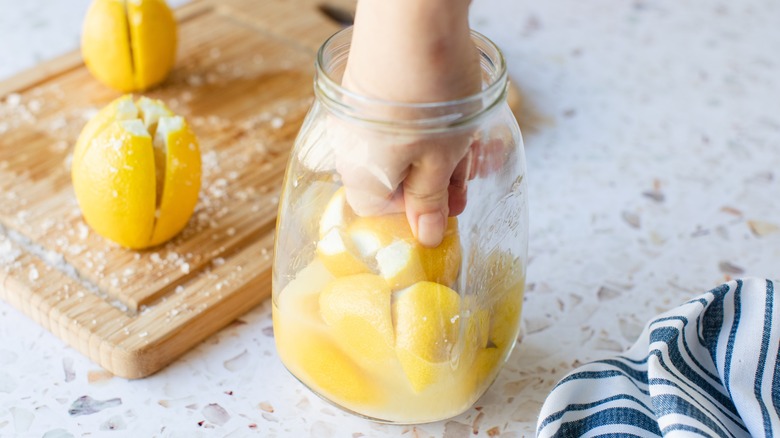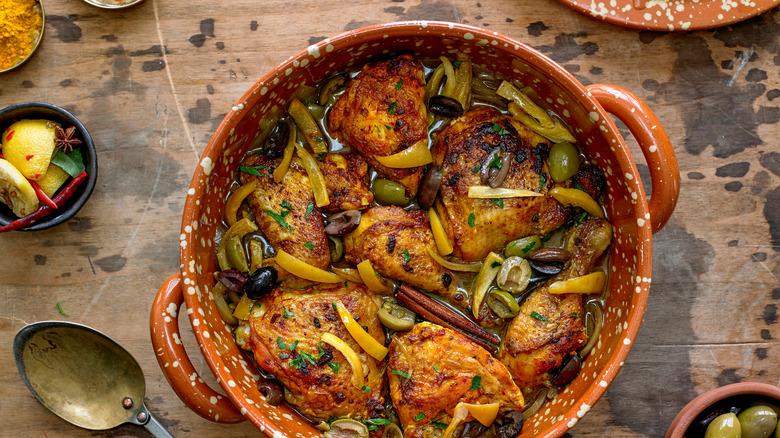Is There A Difference Between Pickled And Preserved Lemons?
It is no secret that lemon can add vibrance to any dish; a quick squeeze toward the end of the cooking process can sharpen other flavors and deliver its citrusy taste. Most of the time, it doesn't take much lemon zest or juice to make a difference, but there are certainly instances where you might be hankering for a bolder bite. That's when preserved lemons can come in handy — all you need is brine and a bit of time.
Yes, brine and time are also the ingredients for pickling. So the very straightforward answer to the question at the start of this article is "no". Namely, pickled lemons and preserved lemons are the same thing. Although they are more commonly referred to as preserved lemons, the fermentation process creates the preserved or pickled lemons and helps develop their striking flavor — so to call them a kind of pickle is strictly correct.
The pickling and preservation process
Traced as far back as the 11th century, preserved lemons originate in North Africa. They are a staple ingredient there as well as in the Mediterranean and Middle East. Preserving and pickling foods allow perishable items to stay edible for much longer. Nowadays, preserved lemons are used in many other regions, and the simple salt-and-lemon-juice fermentation recipe has become more complex in flavor, with spices and lemon varieties differing from country to country.
Already preserved lemons can be found in grocery stores, but if you're looking to make them yourself, the preservation process isn't complicated. If choosing to make your own preserved lemons, keep in mind the flavor profiles of your lemon variety will be reflected in the result. Eureka lemons and Meyer lemons are two of the most common grocery store varieties but taste different; Meyer lemons are relatively sweet while Eureka lemons are more tart. You can add spices, like cinnamon or red pepper flakes, but all you need is kosher salt, sugar, and cut lemons. When those ingredients are all packed together in a jar and given about a month to ferment, you'll end up with something bold and bright with a myriad of uses (that will keep for up to a year).
Now that you have them, how do you use them?
Preserved lemons are a little sweet, salty, briny, and savory, with a more complex taste than a fresh lemon. You also don't have to limit yourself on what part of the lemon you use, as the pulp will be more salty and the peel more citrusy. You can even combine the two to create a purée for soups and sauces. Because of the salt content, though, it's best to use preserved lemons with caution to avoid over-salting. Just be sure to taste test along the way.
It's easy to give your recipes some zest with preserved lemons. You can mix it in to add lively flavor to sauces like basil and preserved lemon pesto. If you would rather the ingredient take center stage (instead of diluting it in a paste) then place the preserved lemon slices right on top, in a dish like cauliflower steak with pine nuts and preserved lemon.


